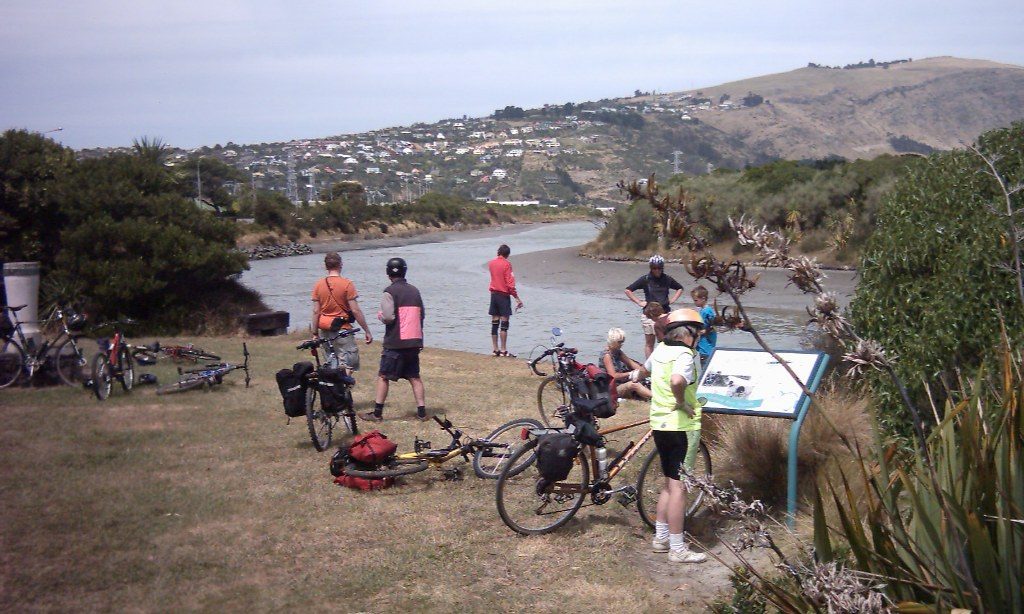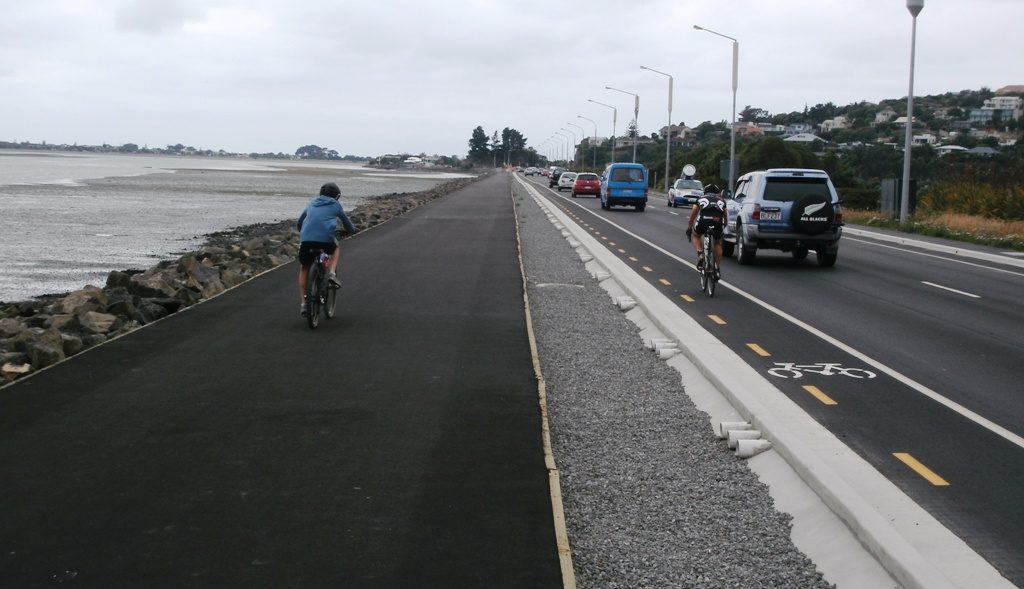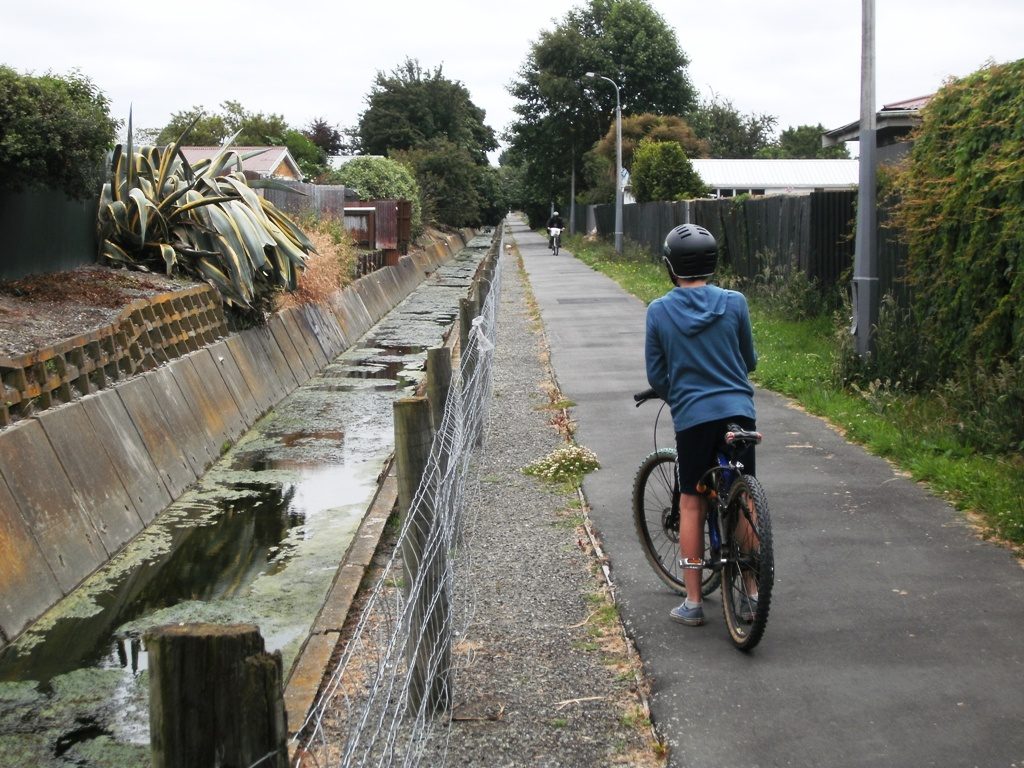So last weekend, my youngest boy was keen to go on a big ride somewhere. OK, I said, how about out to Sumner? It’s been a long time since I biked out there and a lot has happened in southeast Christchurch lately (and a lot is planned to happen).
We started off following the lower reaches of the Heathcote River (see this Spokes Ride map for details of what you will find). Mostly a pleasant quiet ride, although some of the main road crossings need a little care. It could also do with a bit more route signage to highlight it (the historic interpretation panels along the way are good though); for example, the lack of formed paths east of Radley Park may deter some people (although it’s actually pretty easy to ride here). But all of this is planned to be improved as part of one of the Major Cycleway Routes (slated for about 2016-18).

It’s also tricky at the moment to get across the Ferrymead Bridge from the Settlers Reserve track while all the bridge construction works are going on (probably well into 2015 before it’s all done). We ended up having to backtrack to the Ferry/Humphreys signalised intersection to get across the road.

Heading east once more and we were able to try out the upgraded McCormacks Bay Causeway. As well as reinstating the cycle lanes on the road, they’ve also taken the opportunity to construct a 4m wide shared path that will form part of the Chch Coastal Pathway. With plenty of traffic whizzing past, I can see that this will attract plenty of “interested but concerned” punters in the future.

As we made our way to Sumner, there was still evidence of some of the devastating rockfalls that had plagued this area during the quakes. Container walls protect travellers from further debris either side of Redcliffs; unfortunately you also have to hold your breath while you share the lane with traffic for short lengths of road around some of the corners. Fortunately they have applied 30km/h speed restrictions in these places and traffic (for the most part) is good at letting you get through first. But let’s hope that they can eliminate these pinchpoints as a priority along this route.

On to Sumner at last, and here you can start envisage what the finished Coastal Pathway might look like. The existing Esplanade along Scarborough beach is a fantastic facility for all; its width invariably means there is little conflict between users either.

We stopped at Sumner Beach on our way back for some lunch and a wander around the sand. Here we also noticed the very cool cycle repair facility provided right by the beachfront bike parking. You can prop up your bike, pump up the tyres, and fix all manner of problems with the set of tools provided. Very cool – how about a few more of these around the city?

On our way home we decided to take a different route via the Charlesworth Reserve and the Linwood Drain. It’s a bit hard to work out how to get into the Reserve from Humphreys Drive; access from behind Mitre 10 Mega is not at all well indicated. After that though, there is a reasonably good route along the Charlesworth paths, the service lane alongside Linwood Ave, and the Linwood Drain pathway (although some path width and crossing improvements would go a long way). Work is still needed to eliminate the “gap” between Dyers Rd and St Johns St, but this should form part of the “Sumner to City” Major Cycleway Route (scheduled for 2014-16).

All up, it was a great day for riding (not too hot, not too cold), and my boy was very proud to clock up 30km on the journey. Fast forward a few years, and most parts of it may be even more pleasant and accessible to many more people on their bikes.

I can’t understand why that Linwood drain is not better publicised it’s a great route and also good as you cycle away from The Tannery back to St Albans or the city.
Good article. Why is there not more effort put into putting in commuter cycle ways rather than just recreational?
Brian, most of the Major Cycleway Routes that we’re about to spend $70million on are primarily commuting routes; the river routes along the Avon and Heathcote are probably the most “recreational”.